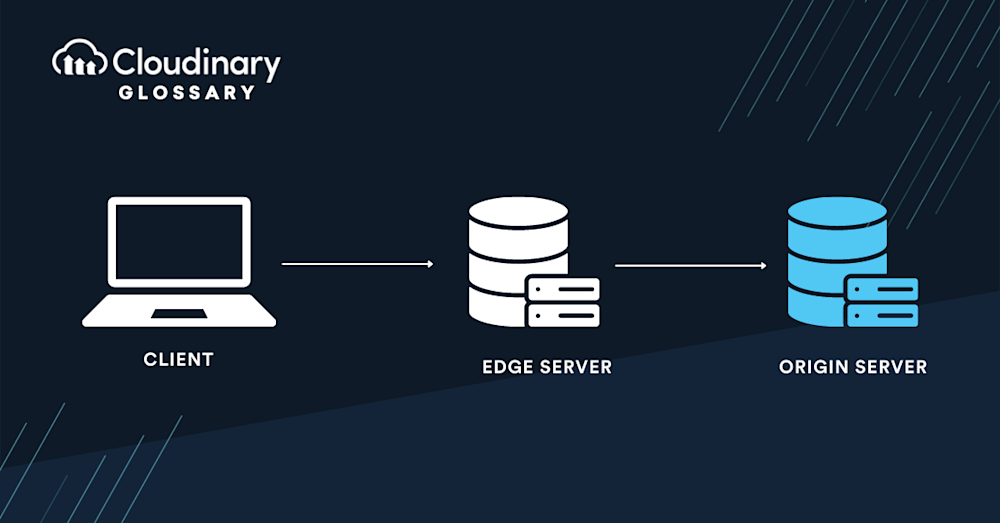What Is An Origin Server?
An origin server is the central point of a website. It’s where your site’s static content is hosted, including HTML pages and images. Origin servers are often called “origin servers” because they’re where you’ll find the original versions of these files (not copies).
How do Origin Servers Work?
- Listening for Requests: Origin servers run programs that listen for and respond to incoming requests from web visitors. This process is crucial for the server to understand and fulfill user requests effectively.
- Fetching Resources: Once a request is received, the origin server fetches the requested resource from the server’s file system. This could include web pages, images, or any other data stored on the server.
- Storing Files: An important function of origin servers is to store all the files necessary for a website. This includes not only the visible content but also any back-end data and scripts.
CDNs use origin servers to host the original content distributed to other servers across their network. That way, all servers downstream of the origin server can offer better performance to clients geographically closer to them. Additionally, these other servers can be the first layer of defense in case of a malicious attack or critical failure.
Origin Servers vs. Edge Servers
Regarding delivering web content, two primary options are available: origin servers and edge servers. Origin servers are the primary source of content, storing the original version of the content. When users request content, the request is sent to the origin server, which then delivers the content to the user.
On the other hand, edge servers are located closer to the end user and keep a cached version of the content. When a user requests content, the request is sent to the edge server closest to the user, which then delivers the cached version of the content to the user. Edge servers are often located in multiple locations worldwide to provide content quickly to users in different geographic areas.
The Relationship Between Origin and Edge Servers
Origin servers and edge servers often work in tandem, with the origin server acting as the central repository for the website’s data, and edge servers disseminating this data closer to the end-users. This collaboration is key to optimizing web content delivery and improving user experience.
Does a CDN Protect an Origin Server?
On the one hand, CDNs protect origin servers by acting as a buffer between the server and the public internet. Any attack directed toward the server would first have to penetrate the CDN’s network, which often has advanced security measures such as firewalls, intrusion detection and prevention systems, and distributed denial of service (DDoS) protection.
To further enhance security, it’s advised that origin servers frequently change their IP addresses. This prevents hackers from establishing a direct communication route to the origin server, potentially circumventing the CDN. This practice adds an additional layer of defense against direct attacks.
On the other hand, CDNs can also be the target of attacks, and if compromised, they can lead to vulnerabilities in the origin servers they serve. For example, if a CDN’s security is breached, attackers may be able to access the cached content and inject malicious code or steal sensitive data.
While CDNs offer some level of protection for origin servers, they are not foolproof and should not be relied upon solely for security. It’s crucial for businesses to take additional security measures, such as using SSL/TLS certificates, implementing two-factor authentication, and regularly updating software and security patches to protect both their origin servers and the CDNs they use.
The Wrap-Up
Origin servers play a critical role in delivering web content to users. They are the primary content source for websites and applications, storing the original, unmodified version of the content. It’s crucial for businesses to carefully consider their options when choosing between origin and edge servers and to take additional security measures to protect both their origin servers and the CDNs they use. Ultimately, by understanding the differences between origin and edge servers and choosing the right option for their needs, businesses can provide their customers with the best possible user experience.
Cloudinary is a platform that can help businesses and creators to improve their web content delivery by providing a powerful suite of tools for managing, optimizing, and delivering images and videos. By leveraging Cloudinary’s capabilities, businesses can ensure that their web content is provided quickly and efficiently while maintaining the security and integrity of their origin servers.
If you want to get started with Cloudinary, you can sign up for a free account today!
Additional Resources You May Find Useful:



